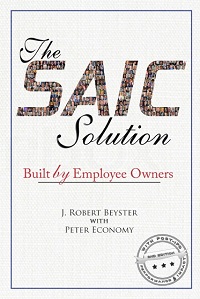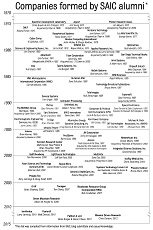NSI Book, Sailing, and the Power of Algae
16 Comments Published by Dr. Beyster October 7th, 2008 in Network Solutions, San Diego.Last week was an interesting week in many respects. Last Monday I had lunch with Peter Economy and we discussed the Network Solutions book and schedules and responsibilities for Mike Daniels and me. As time goes on we will keep you informed as to the specific contents of the book.
On Friday I went out on my boat Solutions with Admiral Wertheim, whom I worked with at General Atomic and at STRATCOM in Omaha. Bob Peters came along also. We traveled to Oceanside as usual and had lunch at the Jolly Roger. This experience serves the purpose of providing me a very relaxing conclusion to the week.
On Sunday Betty, Mary Ann, and I drove to L’Auberge Del Mar for a meeting with Craig Venter and his board of directors, who are in town for a board meeting. The Venter Institute here in La Jolla as you know is totally dedicated to genome sequencing to help in the process of genome therapy and also to try to identify which genes are contributing to plant growth. The purpose of these experiments is to see if algae can be grown in big vats and refined to make petroleum products. There is a long way to go but there is a lot of progress. I will try to keep you informed through the blog of anything we learn of interest.
– Bob





Dr. Beyster,
Speaking of algae; practical application of algae at SAIC started in the Beyster years. Glen Brosch of SAIC Orlando, FL and his team built a Periphyton Water Purification Garden with an algal turf scrubber in 2001. In an unconnected effort, Ron Jones (originally while at FIU then at SAIC), yours truly and others from SAIC researched and tested the use of periphyton algae for Everglades water treatment and designed a 120 ac demonstration facility (the Periphyton Stormwater Treatment Area (PSTA)) in West Palm Beach, FL. The demonstration is on-going and if successful, according to the Corps of Engineers, “PSTA may be a critical component of the Everglades restoration program.â€
Wishing you all the best and with many thanks,
Paul
Paul: Thanks for your message. I had forgotten about the activities you mention in Florida, especially testing the use of algae for water treatment. I gather this system is ongoing and under evaluation by the Corps of Engineers. If it works there, it may be applicable in other swampy areas of the United States. I’m not sure if you harvest the algae and put it to use or what you do — there must be some product use. I always like to understand the details — please post more information as time allows. — Bob
Dr. Beyster: Thank you for the reply. I am happy to provide more information. The unique aspect of this periphyton algae-based technology is that it is capable of capturing the phosphorus in a calcite matrix (a historically and naturally occurring process in the Everglades.) The process can be described as follows. (1) Water with phosphorus (P) concentration less than 30 ppb flows to the treatment area. (Upstream treatment – already existing and in place – with other natural treatment technologies, i.e., submerged aquatic vegetation (SAV), filters the water to the 30 ppb P concentration range.) (2) This results in production of naturally occurring algae laden with CaCO3. (3) P is sequestered in the calcite matrix. (4) P-laden calcium carbonate precipitates to the bottom of the treatment area. After some time, the periphyton area is dried out (usually naturally due to lack of rainfall) and re-wetted, rejuvenating the periphyton mat. As you know, in the Everglades water flows very slowly preventing mobilization of the sediment which binds over time. Studies in the Everglades have found no evidence of subsequent reflux of the calcite-bound phosphorous into the system. Let me know if you would like more information.
With best regards,
Paul
Paul: How commercially viable do you think this is? Who will pay for this and produce it? How far from commerciality is it? I personally like the algae idea a lot, but producing commercially significant amounts of algae for oil will take some time I believe. — Bob
Dr. Beyster: As for the commercial viability of the calciting algae, I believe that its successful implementation in the Everglades (funded by the Corps, at this time) would put it among the best management practices (BMPs) for storm water management and restoration, and on par for cost with the existing approaches. The State of FL would pick it up also, as they have invested in it in the past and are closely watching the Corps’ progress. The fact that it’s a “natural treatment technology†adds to its value. Federal, State and local governments in other parts of the country would likely be interested in the techology’s implementation in their regions. The funds would come out of existing restoration and conservation budgets. The non-calciting approach is easier to implement, but requires biomass harvesting and disposal. Which, of course, is also an opportunity. Depending on the pollutants captured, the biomass with non hazardous content has been shown to be viable as cattle feed and potentially packing material, etc. As you alluded, efficient extraction of oil for fuel would be the “Holy Grail†for algal biomass end use, but it needs real estate or more efficient and cost effective bio-reactors. However, there are a lot of polluted water bodies and high-concentration nutrient producing areas. Hence, there is basis to believe that the investment in algal technologies will lead to commercial viability of its applications. Best regards. – Paul
Paul: Thanks for your entry. It’s good to hear things are going well with your algae-harvesting project. You’re right that a system for commercialization of this process is badly needed. I don’t know if you work for SAIC or not, or if they would be interested in commercialization of the process. I would like to see a pilot plant put together that could produce meaningful quantities of petroleum. This has been going on since I was at SAIC — I wonder how much longer it’s going to take to produce results leading to the growth of profitable enterprises. Please keep me informed as I am very interested in this, as is Craig Venter, my friend at the Venter Institute who is trying to grow the algae in vats. — Bob
Where is Glenn now?
Dr. Beyster,
I am still with SAIC (going on my 17th year). DARPA got involved in this business and awarded SAIC a contract to devise a process for extraction and conversion of algal oil into JP8 jet fuel mix. The contract is currently under protest. Al Mondelli is the SAIC lead on the contract. Best regards, – Paul
Paul: I read with great interest your post about SAIC’s new DARPA contract. In my estimation, the contract addresses a very important potential solution to our long-term energy needs. It’s worth defending. Al Mondelli will do an outstanding job on the contract. — Bob
Dr. Beyster,
DARPA has now officially awarded the contract to SAIC. The work should be beginning soon. Wishing you and yours all the best for the Holydays! –Paul
Paul: Please keep me abreast of how these developments go. I realize that there are probably many years to go before a commercial solution will be developed, but I hope for the sake of our nation’s energy independence that you and others will succeed. — Bob
Dr. Beyster: I will be happy to do what I can. The contract staffing and my contribution (I am with a different business unit within SAIC) are yet to be decided. I wish you and your family a wonderful Christmas, much good health and all the best things in life for the New Year. You have had a very positive impact on my life and I sincerely hope that a measure of the good that you have done is yours now and for time to come. – Paul
Paul: Thank you for your Christmas message. When you publish some meaningful results I would be very interested in seeing them. I saw Barry Butler when he was out here recently and I suspect he has some interest in what you are doing, as well as reverse osmosis. As you may know, he is involved in installing a reverse osmosis system on Catalina Island. I hope to get over to see it when it is not so foggy. — Bob
Dr. Beyster: On your recent trip to Catalina did you get to see Barry Butler’s system? -Paul
Paul: On our recent trip to Catalina we unfortunately did not have time to see Barry Butler’s system. The next time — probably within a month — we will stop in and see the system. I’ll let Barry know ahead of time when we are going. — Bob
To learn about the fast-track commercialization of the algae industry, you may want to check out this website: http://www.nationalalgaeassociation.com